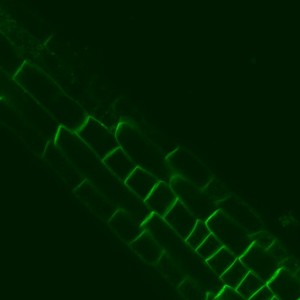Professor of Biology
Health Professions Advisor
B.S., University of Hartford (1972)
Ph.D., Syracuse University (1977)
017 Winston Hall
(336) 758-5318
gibsoncl@wfu.edu
Area of Interest
Cell Biology
Research
In my present research, I am collaborating with Dr, Gloria Muday on a study of the localization of the the auxin transport protein PIN2 in Arabidopsis. PIN2 is a member of a family of protein whose asymmetric localization in the plasma membrane determines the direction of polar auxin transport. PIN2, which is responsible for shootward transport of auxin, is localized on the apical surface of cortical cells in the root.
The polar localization of the PIN proteins is thought to occur through cycling of proteins between endosomes and the plasma membrane. In the Arabdidopsis mutant scd1-1, PIN2 is mislocalized, appearing not only on the apical surface of the cells but also in small vesicular structures throughout the cytoplasm. Using scd1-1 seeds crossed with PIN2-GFP and fluorescently-labeled markers of various endomembrane compartments, we are using the scd1-1 mutant to better understand intracellular trafficking of the PIN2 protein.
Health Professions Advisor
As leader of the WFU Health Professions advising team, I advise students interested in health professions careers and development programs to promote our students’ success and prepare them for careers that blend science and service.
Click here to visit the Pre-health program site
Selected Publications
CL Browne, JR Tobin, and ML Voytko. 2009. Effects of two years of conjugated equine estrogens on cholinergic neurons in young- and middle-aged monkeys. Brain Research 1264:13-23.
CL Browne, JB Swan, EE Rankin, H Calvert,S Griffiths, and M Tytell. 2007. Extracellular heat shock protein 70 has novel functional effects on sea urchin eggs and coelomocytes. Journal of Experimental Biology 210:1275-1287.
WL Silver, and CL Browne. 2000. Integration of laboratory exercises in development and neurobiology courses using the Xenopus oocyte expression system. Journal of Industrial Microbiology and Biotech. 24:353:358.
